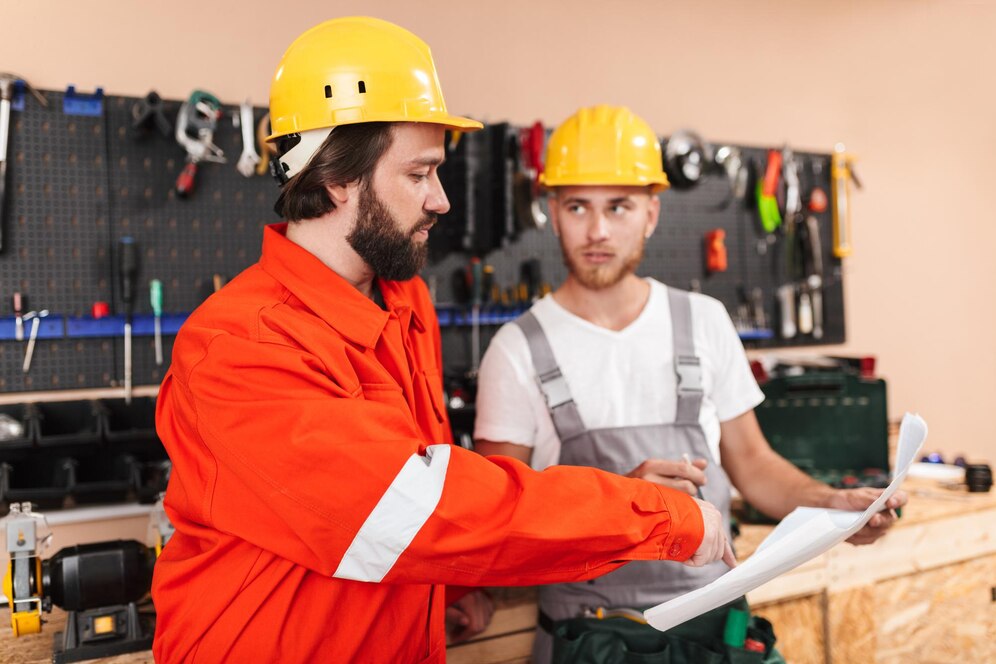When it comes to workplace safety, we often focus on policies, equipment, or training programs. But there’s one vital element that ties it all together — the supervisor. Whether it’s a factory floor, a construction site, or a chemical lab, a supervisor is the bridge between upper management’s vision and the workers’ daily reality.
In today’s blog, we’ll dive deep into the pivotal role of supervisors in safety management, how they connect the dots between leadership and the workforce, and why their presence can make or break a safety culture.
🏗️ What Makes the Supervisor So Important in Safety?
Imagine management creates an excellent safety policy — clear, compliant, and practical. Now imagine that same policy never gets properly communicated to the people on the ground. Or worse, it’s communicated but not followed. What went wrong?
The missing piece? An effective supervisor.
Supervisors are:
- The communicators of company safety policies.
- The enforcers of safe work practices.
- The first responders in incident management.
- The motivators of behavioral safety among workers.
They are where top-down safety strategies meet bottom-up execution.
🔗 Supervisors: The Safety Chain That Binds
Let’s break down exactly how supervisors act as the link between management and workers in maintaining a safe workplace.
1. Translating Safety Vision into Practice
Senior management often works on a strategic level, creating high-level safety goals and policies. But workers deal with real-time hazards — slippery floors, faulty tools, or unclear signage.
The supervisor takes that corporate-level safety vision and translates it into action:
“Here’s what management wants, and here’s what we need to do daily to meet that goal — safely.”
2. Two-Way Communication Channel
Supervisors are the voice of workers to the management and vice versa.
- Upward communication: Reporting safety concerns, incident trends, or worker feedback to management.
- Downward communication: Sharing new policies, safety procedures, and training instructions with workers.
This keeps the feedback loop strong, allowing safety programs to evolve based on real-world input.
👷♂️ Building Trust Through Presence
A good supervisor isn’t just someone with a clipboard or a checklist. They walk the floor, observe work, and interact with workers.
Their physical presence serves three critical purposes:
✅ 1. Visibility and Approachability
Workers are more likely to report unsafe conditions when the supervisor is present, visible, and easy to talk to.
“Hey, boss, this scaffold doesn’t feel stable.”
A small report like that can prevent a major injury.
✅ 2. Behavior-Based Safety Reinforcement
Supervisors witness daily work habits and are best positioned to correct unsafe behavior or reinforce safe actions.
Example:
- A worker lifting a heavy object incorrectly — the supervisor steps in with coaching right away.
✅ 3. Immediate Response to Safety Incidents
In the unfortunate event of an incident, supervisors are often the first on the scene, making them the first responders in managing, reporting, and debriefing the situation.
🧠 The Psychology of Influence: Why Workers Listen to Supervisors
Let’s be real — workers might respect upper management, but they follow their supervisor.
Here’s why:
- Frequent Interaction: They see their supervisor every day.
- Personal Relationships: Trust is built through shared experience.
- Perceived Authority: Supervisors have the practical authority to assign tasks, stop unsafe work, and reward good behavior.
A safety message from a supervisor is often more relatable and respected than an email from HQ.
🛠️ Key Responsibilities of Supervisors in Safety
Let’s get practical. What are supervisors actually expected to do when it comes to safety?
Here’s a snapshot of their critical responsibilities:
📋 1. Safety Briefings and Toolbox Talks
Daily or weekly sessions to keep safety at the top of everyone’s mind.
🧯 2. Hazard Identification and Risk Assessment
Identifying potential hazards and implementing control measures.
🕵️ 3. Conducting Inspections and Audits
Spot-checks, behavior observations, and audits to ensure compliance.
📢 4. Reporting and Documentation
Incident reports, near-miss tracking, unsafe condition alerts — all start with supervisor documentation.
👨🏫 5. Training and Onboarding
Supervisors are often the first trainers for new hires or for retraining after a violation.
📉 When the Link is Broken: What Happens?
If supervisors are not engaged in safety, or if there’s a gap between them and either management or workers, the consequences can be severe:
- Inconsistent safety practices
- Miscommunication of critical policies
- Increased incident rates
- Low morale and trust
- Regulatory non-compliance
In short, without strong supervisors, even the best safety systems can fall apart.
🌱 Developing Safety-Strong Supervisors: What Management Must Do
So how can management strengthen this link?
Here are some proactive ways to empower supervisors:
📘 1. Provide Safety Leadership Training
Supervisors should be trained not just on safety procedures but also on how to lead, motivate, and communicate effectively.
🧩 2. Involve Them in Policy Creation
Let supervisors help draft safety policies. Their practical insights lead to more realistic and effective rules.
🏆 3. Recognize and Reward Good Supervision
Acknowledging a supervisor’s contribution to a low-incident month or great audit result goes a long way.
📊 4. Equip Them With Tools and Tech
Give them access to digital inspection checklists, incident tracking apps, or PPE inventory dashboards. Make safety administration easy and efficient.
📣 A Real-Life Example: When the Supervisor Saved the Day
Let’s say you’re on a construction site. A crane operator is about to lift a load over a walkway where workers frequently pass. The supervisor on-site notices the unsafe lift path and immediately halts the lift.
They reroute the load, place barricades, and issue a brief stop-work meeting.
No one got hurt. No incident report was filed. But that proactive safety action prevented what could have been a serious accident.
That’s the power of a good supervisor.
🧭 Closing Thoughts: Make the Supervisor Your Safety Hero
In a world where safety outcomes matter more than ever — not just for compliance but for human lives — the role of the supervisor is indispensable.
They are the eyes and ears of management.
They are the voice of the workers.
They are the real-time decision-makers when safety is on the line.
If you want to build a strong safety culture, don’t just create better rules — build better supervisors.
📌 Key Takeaways
- Supervisors are the vital link between management and workers in safety.
- They turn policy into practice, keep communication flowing, and build trust.
- Well-trained, empowered supervisors reduce incidents and boost compliance.
- Investing in supervisor development = investing in a safer workplace.
🔎 Did You Find This Post Helpful?
Let me know in the comments how your organization empowers supervisors to take the lead in safety. Don’t forget to share this post with your team and safety groups — let’s create safer workplaces together!
👉 Stay tuned for more actionable safety tips, real-life stories, and practical strategies. Subscribe to the blog and make safety a habit, not a hurdle.
🔁 Readers also enjoyed these blog posts:
- Safety Management’s Role: The Unsung Hero Behind Every Successful Organization
- Safety Management and Its Responsibilities: Protecting People, Preventing Hazards, and Promoting a Culture of Care
- Benchmarking for Safety Performance: A Key to Continuous Improvement
“Start Your Website Journey Today – Exclusive Hostinger Discounts!”

Turn Any Idea into Viral,
Jaw-Dropping AI Videos in Seconds!










